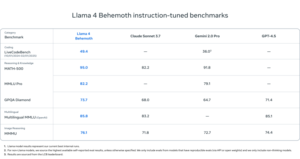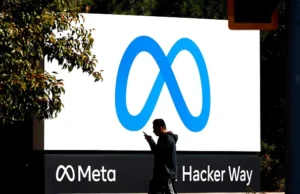Meta’s Llama 4 Reestablishes US Leadership in the AI Competition – David Sacks

David Sacks on the AI Race and Meta’s Llama 4
In recent statements, David Sacks, a key figure in the White House’s approach to artificial intelligence (AI), has highlighted the importance of Meta’s new AI model, Llama 4. Sacks believes that this release has positioned the United States as a formidable competitor in the ongoing global AI race, particularly against China.
The Importance of Open Source in AI
Sacks emphasized the significance of open-source AI technology, stating, "For the US to win the AI race, we have to win in open source too." This assertion comes amidst rising concerns about AI advancements, with the U.S. and China competing for dominance in the field. Since his appointment following Donald Trump’s inauguration on January 20, Sacks has been vocal about ensuring that the U.S. maintains its leadership in AI innovation.
In earlier remarks, Sacks expressed confidence in the U.S.’s capabilities. However, he cautioned against complacency, underscoring the need for continued effort in AI development and deployment.
Meta’s Llama 4: A New Benchmark in AI
Meta has introduced its fourth generation of AI models, called Llama 4, which consists of two configurations: Llama 4 Scout and Llama 4 Maverick. According to Meta, these models are the company’s most advanced yet and are described as leaders in multimodal AI capabilities.
Llama 4 Scout
- Contains 17 billion active parameters
- Built with 16 experts for enhanced performance
- Llama 4 Maverick
- Also utilizes 17 billion active parameters but is designed with 128 experts for superior capabilities.
Performance Comparisons with Rivals
Meta asserts that its new models outshine several competitors in the industry. Llama 4 Scout reportedly surpasses rival models like Gemma 3, Gemini 2.0 Flash-lite, and Mistral 3.1 across numerous established benchmarks. Meanwhile, Llama 4 Maverick is said to outperform not only its predecessors but also notable models like GPT-4o and Gemini 2.0 Flash in various performance metrics.
Interestingly, Maverick is said to perform comparably to DeepSeek v3 for tasks related to reasoning and coding, despite utilizing only half the active parameters—indicating a significant efficiency in its design.
Evolution of Meta’s AI Models
Meta’s journey in AI has been rapid, with Llama 1 being launched a little over two years ago in February 2023. At that time, the company noted a phenomenal response, receiving over 100,000 access requests. Mark Zuckerberg, head of Meta, previously stated that he anticipates the Llama models will become "the most advanced in the industry" by 2025, illustrating the company’s ambitious vision for its AI products.
Meta’s consistent evolution and the introduction of Llama 4 suggest a commitment to not only stay competitive but to potentially set new standards within the AI market.
The Future of AI Development in the U.S.
As the U.S. continues to pursue advancements in AI, the significance of open-source technologies cannot be overstated. Policymakers and tech companies alike must navigate the emerging landscape, balancing innovation with ethical considerations. The AI race is not solely about technological superiority; it involves shaping the future of how these systems will integrate into daily life and impact various industries. With players like Meta leading the charge, the U.S. aims to strengthen its position in this critical domain, ensuring its influence and leadership remain intact.






